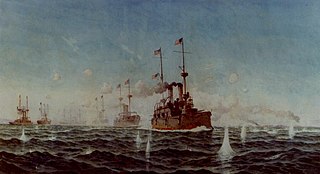
The Battle of Manila Bay, also known as the Battle of Cavite, took place on 1 May 1898, during the Spanish–American War. The American Asiatic Squadron under Commodore George Dewey engaged and destroyed the Spanish Pacific Squadron under Contraalmirante Patricio Montojo. The battle took place in Manila Bay in the Philippines, and was the first major engagement of the Spanish–American War. The battle was one of the most decisive naval battles in history and marked the end of the Spanish colonial period in Philippine history.

USS Cabot (CVL-28/AVT-3) was an Independence-class light aircraft carrier in the United States Navy, the second ship to carry the name. Cabot was commissioned in 1943 and served until 1947. She was recommissioned as a training carrier from 1948 to 1955. From 1967 to 1989, she served in Spain as Dédalo. After attempts to preserve her failed, she was scrapped in 2002.

USS Snook (SS-279), a Gato-class submarine, was the first ship of the United States Navy to be named for the common snook, an Atlantic marine fish that is bluish-gray above and silvery below a black lateral line.
Several ships of the United States Navy have borne some version of the name Roosevelt in honor of members of the Roosevelt family.
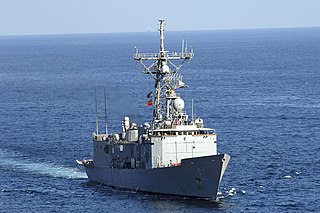
USS Ingraham (FFG-61), the last American Oliver Hazard Perry-class guided missile frigate to be built, was the fourth ship of the United States Navy to be named for Captain Duncan Ingraham (1802–1891).
USS Percival may refer to the following ships of the United States Navy:
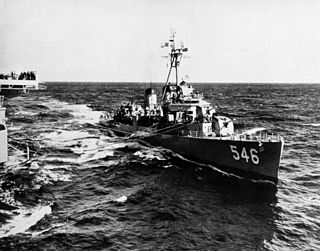
USS Brown (DD-546) was a Fletcher-class destroyer of the United States Navy, named for George Brown, a seaman on the crew of USS Intrepid during the raid that destroyed the captured USS Philadelphia in Tripoli harbor during the First Barbary War. Entering service in 1943 during World War II, the ship saw active service until 1962 when she was decommissioned and sold to Greece. Renamed Navarinon, the destroyer was active until 1981 when she was sold for scrap.

USS Lloyd (DE-209/APD-63), a Buckley-class destroyer escort of the United States Navy, was named in honor of Ensign William R. Lloyd (1916–1942).

The Invasion of Lingayen Gulf, 6–9 January 1945, was an Allied amphibious operation in the Philippines during World War II. In the early morning of 6 January 1945, a large Allied force commanded by Admiral Jesse B. Oldendorf began approaching the shores of Lingayen from Lingayen Gulf, on the island of Luzon, the largest and Northernmost island in the Philippine archipelago island chain. U.S. Navy and Royal Australian Navy warships began bombarding suspected Japanese positions along the coast of Lingayen from their position in Lingayen Gulf for three days. On "S-Day", 9 January, the U.S. 6th Army landed on a roughly 25 mi (40 km) beachhead at the base of the Gulf between the towns of Lingayen and San Fabian.

USS Luzon (ARG-2) was an internal combustion engine repair ship that saw service in the United States Navy during World War II. She was the lead ship in a class of twelve and was named for the Island of Luzon, the chief island in the northern Philippines and site of the capital city of Manila. She is the second US Naval vessel to bear the name.
USS PC-1603 was a submarine chaser of the United States Navy during World War II. She was originally built and commissioned as USS Force (AM-99), an Adroit-class minesweeper. On 1 June, she was renamed PC-1603 and earned three battle stars for service in the Pacific during the war. The ship was damaged by a pair of kamikaze aircraft on 26 May 1945 and later scuttled.
USS LSM-135 was a LSM-1-class landing ship medium built for the United States Navy during World War II. Like many of her class, she was not named and is properly referred to by her hull designation.

USS Rombach (DE-364) was a John C. Butler-class destroyer escort acquired by the U.S. Navy during World War II. The primary purpose of the destroyer escort was to escort and protect ships in convoy, in addition to other tasks as assigned, such as patrol or radar picket.

Isla de Luzón was an Isla de Luzón-class protected cruiser of the Spanish Navy which fought in the Battle of Manila Bay.

USS Isla de Luzon was a former Spanish Navy second-class protected cruiser of the same name, captured by and commissioned into the U.S. Navy as a gunboat.
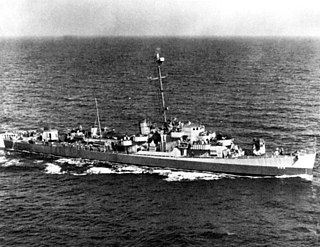
USS Day (DE-225) was a Rudderow-class destroyer escort in the United States Navy during World War II.

The Xanthus-class repair ships were a class of five auxiliary ships built for the United States Navy and Royal Navy. Ships of the class served in a diverse range of environments in varying capacities during both World War II and the Korean War. Xanthus-class ships were in commission between 1945–1955.
Luzon is the largest island in the Philippines. Luzon may also refer to:
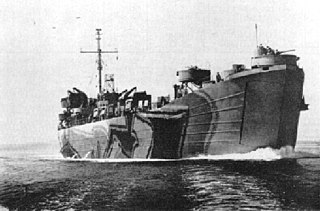
USS LST-909 was an LST-542-class tank landing ship in the United States Navy. Like many of her class, she was not named and is properly referred to by her hull designation.
This page is based on this
Wikipedia article Text is available under the
CC BY-SA 4.0 license; additional terms may apply.
Images, videos and audio are available under their respective licenses.













